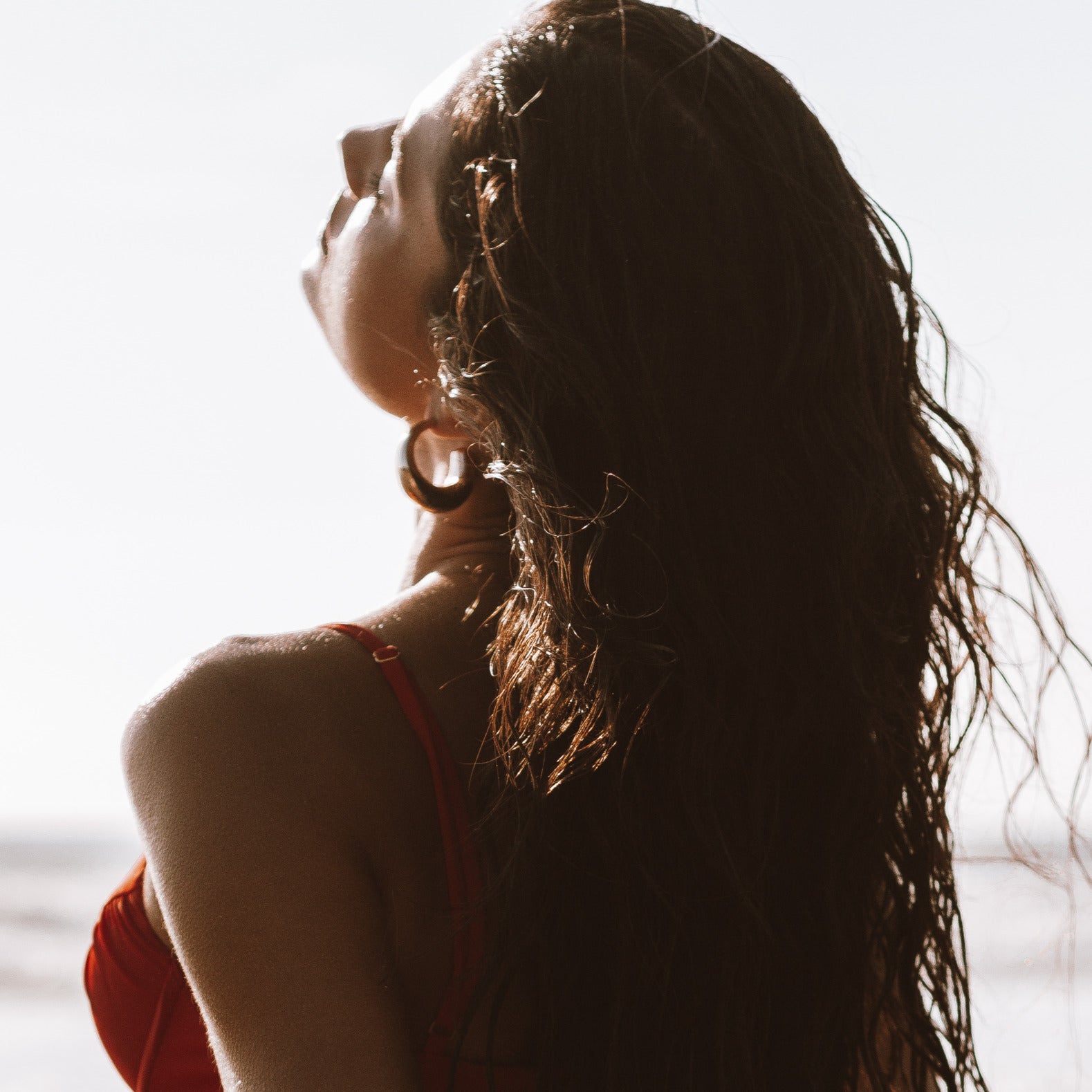
Sun Protection
The harmful effects of UV rays creep up over time. And nobody likes a creeper! Sun protection is an imperative part of your daily beauty routine whether you are hitting the pool club or just going to a meeting.
Give your ears, knees, calves, elbows and the tops of your feet the attention they deserve with a healthy layer of SPF.
A teaspoon or a tablespoon?
Remember this rule of thumb: Your face requires a teaspoon of sun protection; your arms and legs, a tablespoon.
Be patient and wait for your skin to soak it up for 15 to 30 minutes before taking in those rays.
It’s getting hot out here. The sun is in full force from 10 a.m. to 3 p.m., so limit your exposure during these golden hours. But if you must, stay protected and balance it out with a bit of shade too.
Two is the magic number.
Jumping in the water for a quick cool off? Going to take that paddleboard for a spin? Every little thing you do—swimming, sweating and toweling off—decreases your precious protection. Apply, reapply and then repeat your sunscreen, again and again—every two hours is recommended.
Even when skies are gray, baby it will be okay, if you lather up with sun protection. UV rays can penetrate the atmosphere, and yes, even when it’s cloudy, you can still get burned. UVB rays are strongest during the summer, and UVA remains constant throughout the year. Step up your SPF number during the summer. And even if you are a shade dweller, you can still get burned from the reflection of the sun on surfaces such as water, sand, snow and the ground.
Medications can cause photosensitive reactions. It is not uncommon to get a “sunburn,” rash or other allergic-type reaction. And these types of flare-ups are not all the same for everyone, so talk to your doctor or pharmacist for advice before soaking in the sun.
Fragrances with bergamot, citron, lavender, sandalwood and musk can also cause photosensitive reactions, so go easy or better yet, go without your favorite essenses while you’re exposed.
Tropical and semitropical locations are intense when it comes to sun exposure—and become more direct as you get closer to the equator. At higher elevations, you need more protection because the atmosphere is thinner. Go to a higher SPF when vacationing in these locations.
It pays off to be educated especially when it comes to your precious epidermis. Happy sunning!
